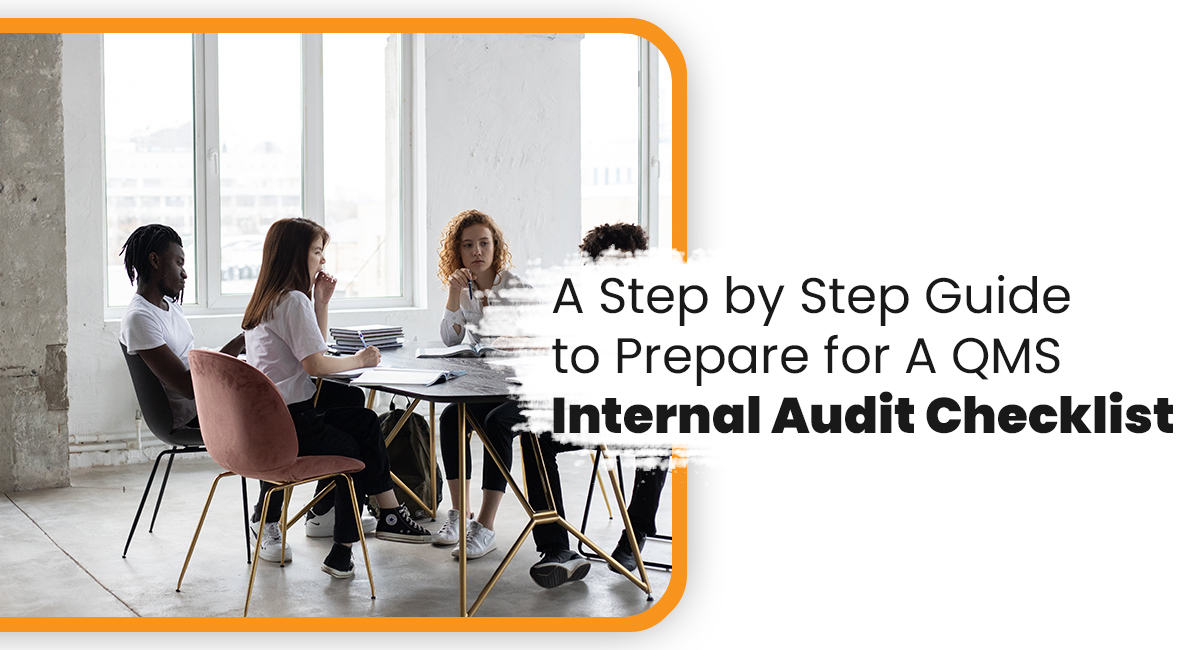
A quality management system will ensure a streamlined operation for delivering services that satisfy your customers. It plays a pivotal role as sustainability factors depend on the effectiveness of your quality maintenance. The International Guide for Quality Management known as the ISO 9001 sets the guidelines, terms, regulatory conditions for enhancing, controlling, and measuring the quality performance of operation systems. This accreditation process asks companies to conduct an internal audit before they begin their system registration. Through the audit assessment, the management team can verify progress made and result of enforcing strategic measures for quality assurance.
A QMS internal audit checklist is made to interview individual stakeholder groups and understand their perspective on the performance of the system. The checklist helps to ensure that the process of the system aligns with the international benchmark. The questions in the checklist must be prepared in a way that verifies whether established standards have been properly implemented or not.
The management team generally takes responsibility for preparing the checklist. They often hire professional audit specialists to help assist with the process. The questionnaire is crucial for determining if the system is ready or how much correction is left. The following blog provides an example of what a checklist must look like. The checklist can be tailored to your specific industry and the requirements of the relevant quality management standards.
Which questions should you put in the QMS internal audit checklist?
For preparing the questions, one must be aware of the fundamental clauses of the global quality management standard. The questions fall into several categories according to the regulatory clauses. Each segment/clause must contain at least two questions. The following provides a general checklist for the QMS.
Policy and objectives of quality management system
• Is the quality policy documented, communicated, and understood by all relevant personnel?
• Are measurable quality objectives established at relevant functions and levels?
Responsibility of the management
• Does the management team exhibit leadership and commitment when it comes to delegating, inspecting, and assessing the progress?
• Did the top management team communicate individual roles, responsibilities, and define the authorities?
• When did the management last check on the operations?
Control of documents/knowledge management
• Did the top management team record every step for implementation?
• Is there any recorded procedure for document maintenance?
• Did the management team regularly review and update the documents?
Resource management
• Did the management team check if the infrastructure, resources, and working environment have adequate efficiency for meeting the quality objectives?
• Did the management provide any training to the workers?
• Did the management check whether there is any evidence of competence and awareness?
Service realization
• Is there any individual procedure for determining customer requirements?
• Does the management regularly check if the satisfaction of the customers is met from time to time?
• Does the management maintain a strict protocol for controlling actions for design and development activities?
Measurement and continual improvement
• Is there a process for monitoring and measuring customer satisfaction?
• Are internal audits conducted at planned intervals?
• Is corrective and preventive action taken when nonconformities are identified?
Control of the nonconforming services
• Did the management document all the procedures for confronting/dealing with the nonconforming products?
• Did the management take proper actions for modification?
• Did the management document the strategic actions?
Satisfaction of the customers
• How is customer satisfaction monitored and measured?
• Are customer complaints addressed and resolved effectively?
Supply chain management
• Verifying the criteria for selection, assessing performance, and for evaluating the quality of the materials provided by the suppliers?
• Is there any strong evidence of having effective communication with the suppliers?
These are some of the basic questions, which help the management team will use to determine progress made and the performance effectiveness of its quality management system.
To hire professional support for obtaining the requirements of the ISO business management system standards and the internal audit, contact us at Compliancehelp. We are the premier site for achieving any ISO certification in Australia. Our bespoke solutions for ISO and other global certifications are ready to make the seemingly exhausting process of accreditation, comfortable and time bound. From basic consultation to audit and analysis, we will cover everything. Get help to clear your concepts regarding the clauses of any management system standard you require.

Get connected with us on social networks!